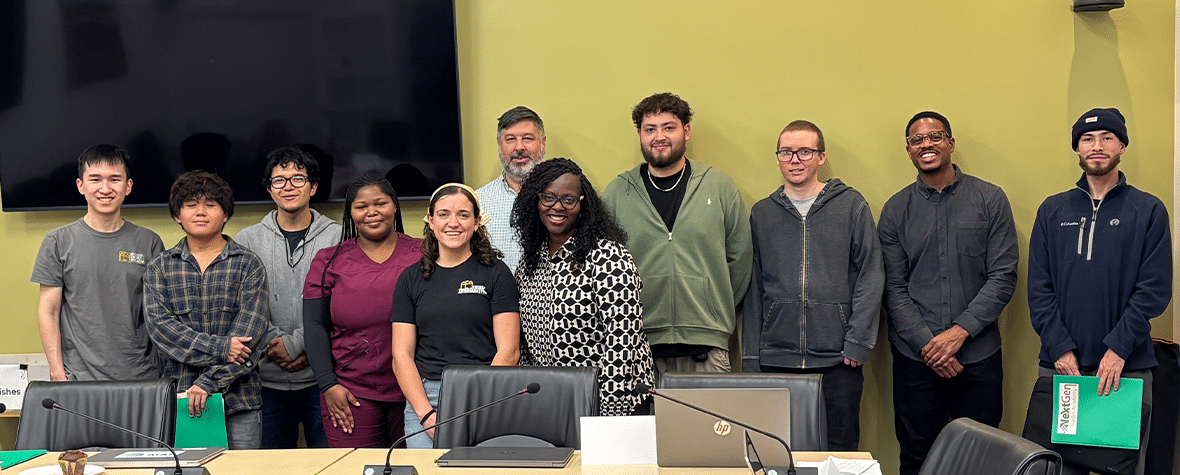In der Reihe Energie 101 von MCE geht es um das Warum und Wie der erneuerbaren Energien, damit Sie mehr über Konzepte wie die Vorteile von Biomasse und die Wissenschaft hinter der Solarenergie erfahren können.

Was sind die Vorteile der Wasserkraft?
- Es ist eine der am teuersten Energiequellen.
- Sie ist zuverlässig und kann rund um die Uhr Energie erzeugen.
- Wasserkraftwerke sind äußerst effizient und können bis zu 90% von Energie in Elektrizität.
- Wasserkraft erzeugt weder Treibhausgase noch Abfälle.
Was sind die Nachteile der Wasserkraft?
- Die Wasserkraft hängt vom Wasserstand ab und schwankt je nach Niederschlagsmenge.
- Er stört natürliche Lebensräume, kann die Wanderung von Fischen stören und einheimischen Pflanzen und Tieren schaden.
- Durch den Bau von Stauseen und Dämmen können Gemeinden verdrängt werden und die Gefahr von Überschwemmungen steigt.
Wie wird die Wasserkraft in Strom umgewandelt?
Staudamm für Wasserkraftwerke
Wasserkraftwerke füllen ein Reservoir, indem sie den Wasserfluss flussabwärts drosseln. Das Wasser fließt durch eine kleine Öffnung im Damm bergab, wo es Turbinen antreibt und mechanische Energie erzeugt. Ein Generator wandelt dann die mechanische Energie in Elektrizität um.

Pumpspeicherung
Pumpspeicherkraftwerke sind eine Art von Wasserkraftwerken, die es ermöglichen, die durch Wind- und Sonnenenergie erzeugte Energie in Zeiten geringer Nachfrage zu speichern, bis sie gebraucht wird. Wind- oder Sonnenenergie werden genutzt, um Wasser bergauf zu einem Stausee zu pumpen, wenn die Stromnachfrage gering und die Stromerzeugung hoch ist. Das Wasser wird freigesetzt und treibt Turbinen an, wenn es wieder bergab fließt, um in Zeiten hoher Nachfrage Strom zu erzeugen.

Laufwasserkraftwerke
Laufwasserkraftwerke nutzen den natürlichen Wasserfluss eines Flusses und nicht einen großen Stausee. Da sie kein Wasser speichern, sind Laufwasserkraftwerke vom saisonalen Wasserstand abhängig und haben in der Regel eine geringere Erzeugungskapazität. Diese Kraftwerke haben einen geringeren ökologischen Fußabdruck als Wasserkraftwerke und sind weniger anfällig für Überschwemmungen.
Was ist der Unterschied zwischen großer und kleiner Wasserkraft?
Wasserkraftwerke unterscheiden sich in Größe und Erzeugungskapazität. Große Wasserkraftwerke sind Großstaudämme mit einer Kapazität von über 30 Megawatt, während kleine Wasserkraftwerke in der Regel weniger als 10 Megawatt erzeugen.
Warum wird die große Wasserkraft nicht als erneuerbare Energiequelle betrachtet?
Sowohl kleine als auch große Wasserkraftwerke gelten als kohlenstofffreie Stromquellen. Kleine Wasserkraftwerke werden auch als erneuerbar eingestuft. Große Wasserkraftwerke gelten im US-Bundesstaat Kalifornien jedoch nicht als erneuerbar, da sie die Umwelt beeinträchtigen. Kohlenstofffreie Ressourcen wie kleine und große Wasserkraftwerke spielen eine wichtige Rolle für MCE und Kalifornien, wenn es darum geht, unsere Klimaziele zu erreichen.
Wissenswertes
- Bis 2019war die Wasserkraft die größte Quelle für erneuerbaren Strom in den Vereinigten Staaten.
- Das älteste Wasserkraftwerk in den Vereinigten Staaten ist das Wasserkraftwerk Whiting in Wisconsin, die 1891 ihren Betrieb aufnahm.
- Die Niagarafälle sind die größte Stromquelle in New York und erzeugen genug Elektrizität, um die 24 Millionen Glühbirnen sofort.




